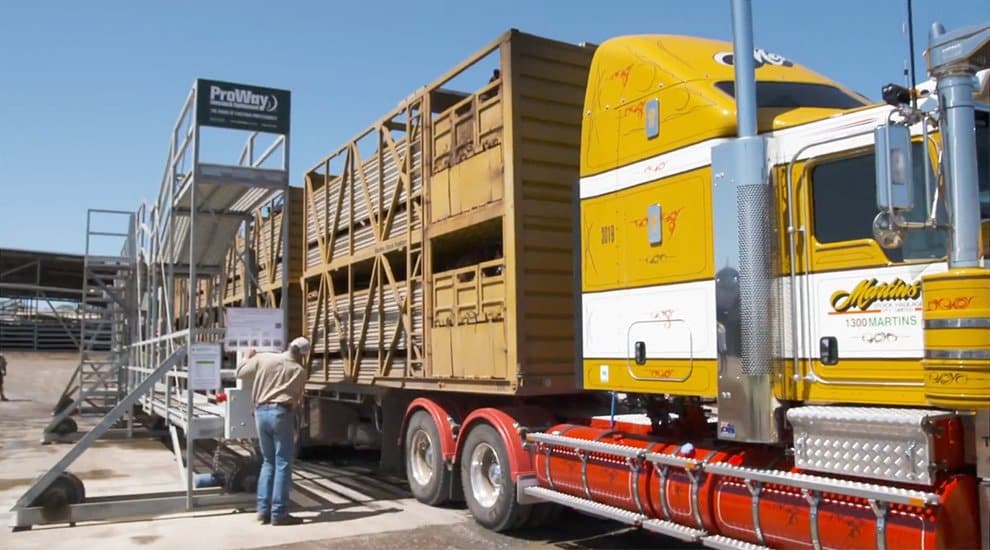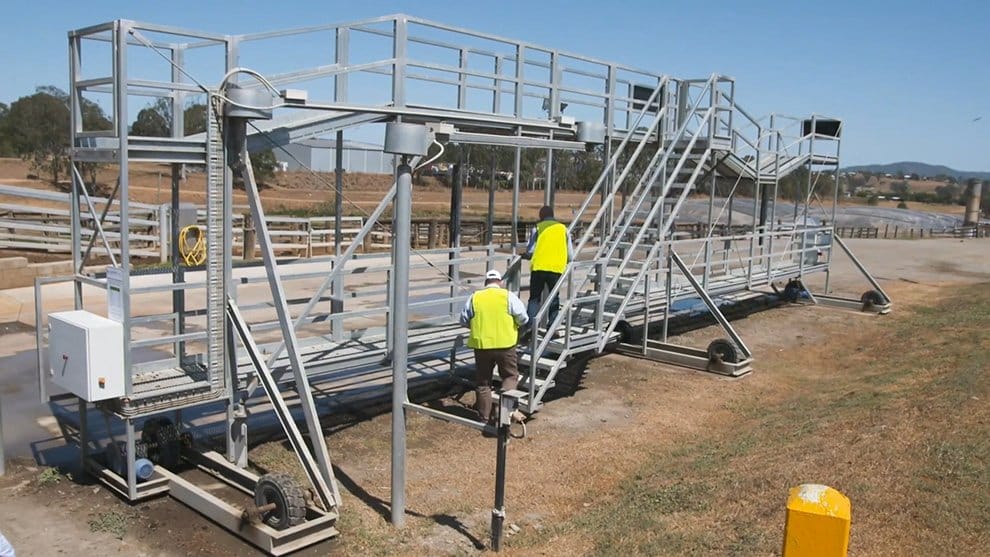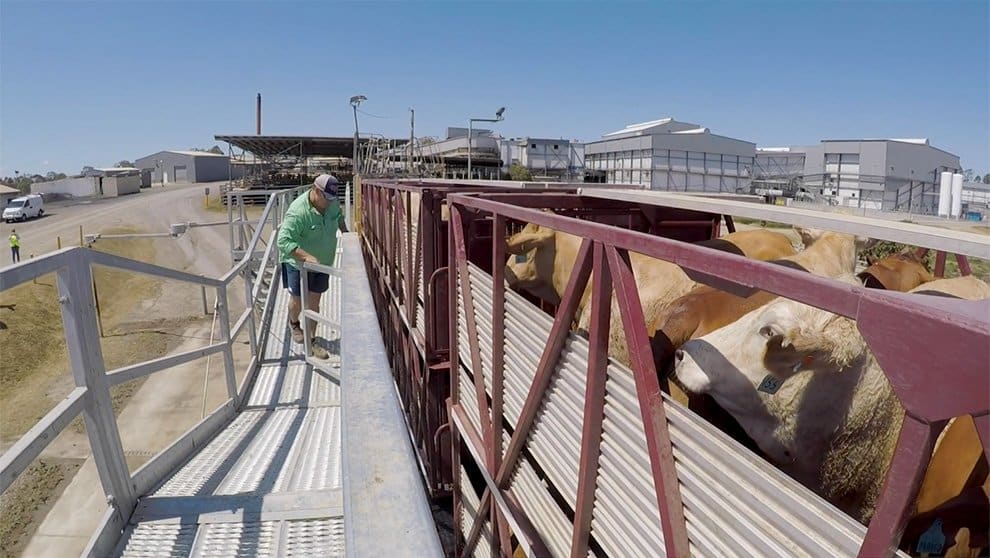A 12 week trial of a user-pays Crate Parallel Access Landing (Crate PAL) has proven successful at Kilcoy Global Foods Australia in South East Queensland.
The Crate PAL is designed to provide a safe and secure working platform spanning the length of a B-double trailer. This means drivers avoid having to climb up and down the side of a truck and limits the risk of falling from a height, or being accidentally hit by livestock.
Along with ProWay, industry, government and the National Heavy Vehicle Regulator have long been working towards safer working environments for handlers and animals and the results of this trial are positive industry-wide.
Going further, Crate PAL can now be operated on a user-pays model. Not only is it safer for drivers unloading cattle at feedlots, saleyards and processors it’s also more cost effective.
Why the feasibility study was needed
The study was tasked with investigating whether it was possible to share the cost of installing and operating modern and innovative infrastructure at facilities that experience high volumes of loading and unloading of livestock.
With both handlers and facilities needing to load and unload livestock quickly, it can become a dangerous activity and is a common cause of handler injury.
That’s why the ALRTA felt it necessary to conduct this trial with the idea that a user-pays model will encourage rapid and more widespread uptake of the safer, more efficient infrastructure.
The study revealed that the costs of installation and upkeep can be fully recovered in less than three years on a user-pays model and this has instigated ALRTA to recommend livestock facilities consider the user-pays option as a means of fast-tracking the installation of loading or unloading gantries.
What the feasibility study found
In an industry with a focus on safety and productivity gains, this feasibility study delivered some very positive results.
Here’s what the study found:
It is possible to operate a Crate PAL on a user-pays basis: This means high-volume facilities can install and operate a Crate PAL and can recoup the initial outlay by allowing livestock drivers (or their employers) to pay when using the facilities.
There is a supply and demand relationship between user prices and usage rates: This means that a Crate PAL will be more frequently used when the price per use of it decreases. So, the more volume pushed through the Crate PAL, the better it is for everyone.
At the trial site the optimum price was $10.00 per use with a cost recovery period of 2.6 years: Using a Crate PAL to safely and efficiently load or unload livestock averaged out to just $10.00 per use.
At other sites installation, maintenance and charging costs could typically be fully recovered in less than three years: While the installation of innovative infrastructure, like a Crate PAL, might seem expensive, with a user-pays model livestock producers can earn back what they spend within three years.
User-pays is likely to be feasible at all sites with more than 15 truck deliveries per day: Delays to loading and unloading livestock can greatly impact both the facility and other drivers (who have to wait until the loading ramps are free). This study showed that a user-pay model is possible at all sites and will service at least 15 trucks per day. A Crate PAL can vastly improve productivity.
Installation of a Crate PAL improves unloading safety without reducing efficiency: Nobody wants handlers or animals risking injury through poor safety practices. The Crate PAL can significantly reduce the risks handlers and livestock face when carrying out the requirements of their job, while not causing unnecessary delays to productivity.
What the industry says about Crate PAL
At the Kilcoy Global Foods Australia trial site, leading industry figures were keen to emphasise the importance and value of a Crate PAL.
“Seeing firsthand the initiatives being taking on this pilot project is remarkable and I don’t think it will be too long before we see initiatives like this at every sales yards or loading facility around the country,”
Scott Buchholz, Assistant Minister for Road Safety and Freight Transport.
“What you’re seeing here today is a first of it’s kind piece of equipment that will hopefully have application on sites around Australia,”
Matthew Munro, Executive Director, Australian Livestock and Rural Transport Association.
“I hope future abattoirs, feedlots and sales yards will embrace this idea and help our industry stay safer,”
Mark Collins, Fleet Manager, Frasers Livestock Transport.
As proven by this feasibility study, Crate PAL offers livestock facilities and drivers a more streamlined, safe and productive way to work.
We believe a user-pays Crate PAL model is the most cost effective way to install, operate and manage cattle loading and unloading at your facility.
To read the full feasibility study report, please visit ALRTA website.



